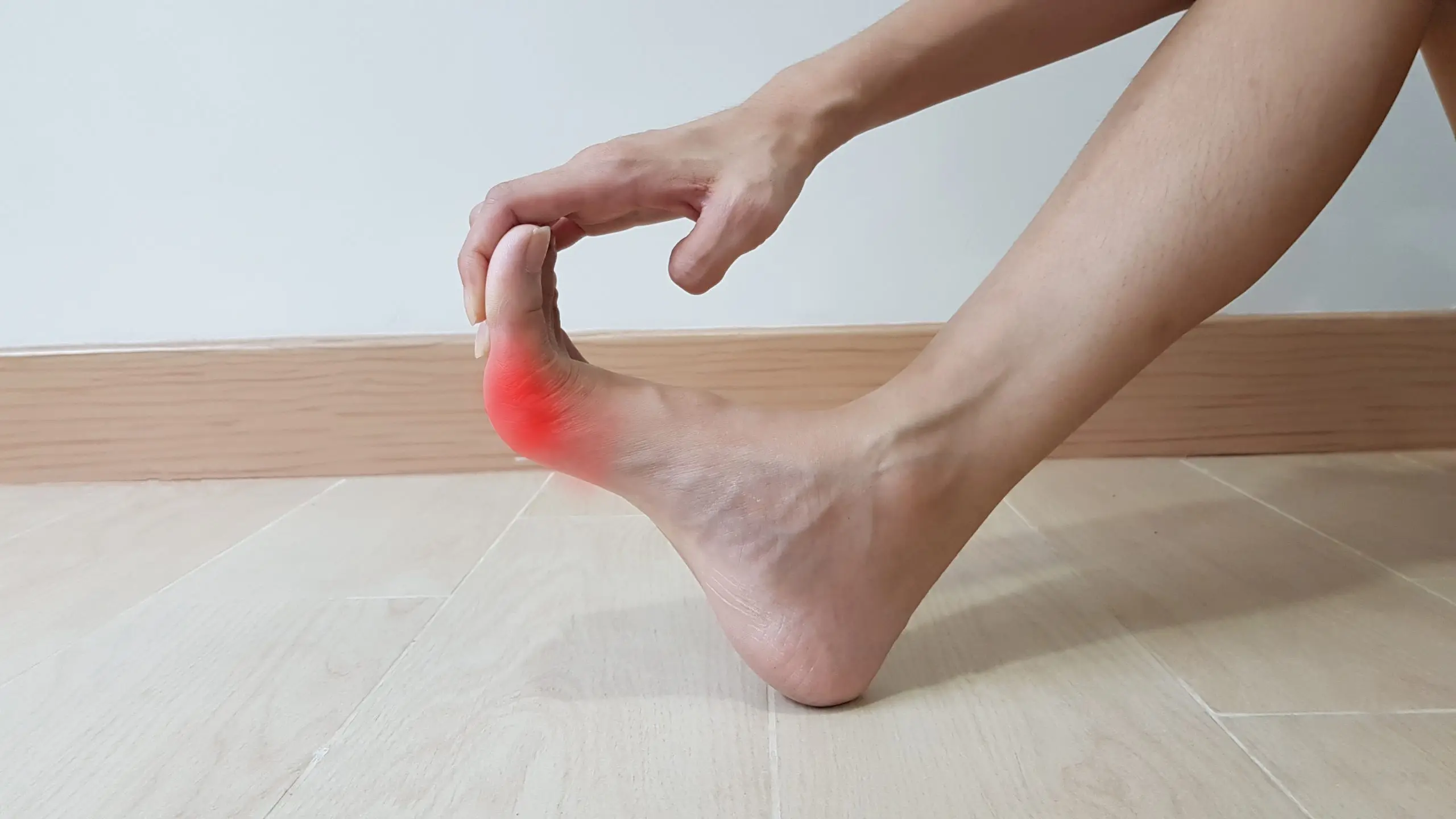
The inflammation of the sesamoid bones under the metatarsal head near the big toe is known as sesamoiditis.
This plantar condition, which is more frequent among dancers and runners, produces discomfort and limits movement flexibility.
Although sesamoiditis is relatively simple to cure on its own, it is critical to detect the warning symptoms before it worsens.
Here are the symptoms, causes and medical treatments for sesamoiditis in the foot.
Sesamoiditis symptoms
The sesamoids are interesting little bones that aren’t formally part of the human skeleton. They aren’t related to anything else in the musculoskeletal system save a tendon and a joint.
Despite their small size, they can cause physical and mechanical pain.
In sesamoiditis, they are the cause of symptoms like:
- Swelling of the affected area
- Pain under the base of the big toe that gets worse when walking
- Redness or bruising of the foot
- A change of gait due to mechanical compensation
- Inability to walk quickly or on uneven ground
- Difficulty bending or mobilizing the big toe correctly
If these symptoms are present, a visit with a podiatrist is recommended to rule out other possible diagnoses, such as a sesamoid stress fracture.
Diagnosing sesamoiditis
Some foot diseases exhibit symptoms that are comparable to sesamoid bone inflammation.
The podiatrist uses several tests to establish the diagnosis of sesamoiditis in order to coordinate the most effective treatment.
These diagnostic techniques are based on the following:
- Visual inspection of the foot
- Biomechanical exam
- A joint puncture, if the physician or podiatrist suspects the presence of an infectious form of arthritis or gout
- A digital x-ray of the foot to rule out arthritis pain or a stress fracture
Causes and aggravating factors of sesamoiditis
Overuse of the big toe tendons is the most common cause of sesamoiditis, although it can also be exacerbated by other causes.
The following conditions are commonly linked to the development of sesamoiditis-like inflammation:
- The presence of a poorly treated foot bunion
- Arthritis of the foot
- Untreated foot fracture
- Recurrent inflammation of the tissue near the sesamoid bones
- Wearing shoes with thin soles or high heels
- Regular practice of sports that are hard on the big toe area, such as dancing or basketball
- Arch deformity such as flat or cavus foot
Because various plantar diseases can induce sesamoiditis, it is strongly advised that you seek medical advice.
If that’s the case, the medical professional will be able to pinpoint the pathology or lesion that’s causing the discomfort.
Sesamoiditis prevention
Obviously, this type of metatarsalgia can be caused by a combination of factors.
If the patient does not have any additional conditions that might make sesamoiditis worse, the field is open for preventative treatments.
The following are some suggestions for reducing the occurrence of sesamoiditis in the foot:
- Limit the use of high-heeled shoes
- Opt for shoes with thicker, stiffer soles
- Choose shoes that are well adapted to the morphology of the feet and to the physical activity practiced
- Maintain a healthy weight
- Wear protective pads in your shoes
- Temporarily stop sports activities that put a lot of strain on the foot
If the bones are still prone to inflammation despite your attempts to prevent it, you should see a podiatrist.
He or she is equipped with the necessary equipment and expertise to provide the necessary medical care.
Medical treatments for inflammation of the sesamoid bones
As we’ve seen, sesamoiditis symptoms may be quite inconvenient for the sufferer.
And, while minor lifestyle modifications frequently relieve pain, they are not always sufficient.
Sesamoiditis can be handled with medical treatments available at a podiatric clinic, such as:
- Prescription of custom-made foot orthotics
- Therapeutic taping
- Orthopedic shoes
- Cortisone injection in the foot
- Prescription of non-steroidal anti-inflammatory drugs
- Laser therapy
- Development of a training plan that is better suited to your condition
Sesamoiditis is seldom treated with surgery.
However, if another issue exists, such as a fracture or a kind of osteoarthritis, the podiatrist may recommend surgery.
Then we consider operations like:
- Sesamoid removal, which, as the name implies, requires the complete removal of the bone that is causing the pain
Hallux valgus surgery, which allows the removal of a bunion in the foot that opens the door to the emergence of sesamoiditis
PiedReseau – Learn more
Would you like to learn more about sesamoiditis and other plantar problems? We frequently publish content on these subjects!
However, even though our website contains useful information, nothing can replace a genuine podiatric consultation in a clinic.
Take care of your feet, they’re precious!
Sesamoiditis is an inflammation of the foot’s sesamoid bones, which are located near the big toe. This plantar condition is common in sports and dancers, and it can impair mobility and cause foot discomfort.
The two sesamoids in your feet are small bones connected to a tendon in your foot under the base of the big toe that aid in walking. Although helpful, these two bones can cause a variety of problems, including sesamoiditis.
The two sesamoid bones are directly connected to a tendon, and sesamoiditis produces inflammation of both the bones and the tendon, thus we may consider it as such.
If your two sesamoids are still producing discomfort after following all of the preventive suggestions on this page, you should see a podiatrist.
Sesamoiditis surgery is quite rare. In more extreme situations, such as a fracture that does not heal, the podiatrist will need to remove the sesamoid bone.
Recovery period is usually a few weeks with adequate care.